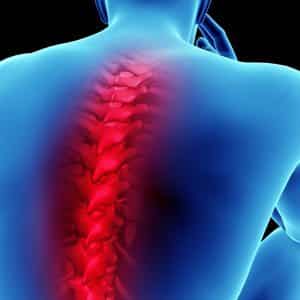The spinal cord is arguably the most important part of the human body. Without it, your brain would be unable to control your limbs, and your limbs would be unable to move. Disable it, and you might lose the ability to breathe. You would definitely lose the ability to feel. Of course, you wouldn't feel pain either, but that's not a good thing. Pain is essential to survival.
Do I really need a personal injury attorney? See this article to learn more.

Even though it's protected by bone and cushioning fluid, your spinal cord is extremely delicate. Any trauma can lead to damage, and damage in turn may lead to disability. Your spinal cord does not need to be fully severed for severe effects to result.
So what causes spinal injury? While osteoporosis and other "non-traumatic conditions" can result in spinal damage, these devastating injuries are disproportionately caused by accidents. According to the Mayo Clinic, car accidents are the most common cause of spinal cord injury in America. Every year, more than 35% of all spinal injuries are the result of vehicle crashes. Another 25% are caused by falls, especially among older Americans over the age of 65. The World Health Organization reports that "as many as 500,000 people suffer a spinal cord injury each year."
After trauma to the spine, any pain or impairment caused by damage to the nerves is a spinal cord injury. Injuries that only affect your vertebrae, like herniated disks and spinal stenosis, are not spinal cord injuries.
Your spinal cord is divided into four sections:
Obviously, any one of these sections can be damaged in a traumatic accident. Setting aside severity, the higher up on the spine an injury occurs, the more widespread the effects.
Spinal cord injuries can be placed in two buckets. Complete injuries result in a total loss of function below the spinal area injured, although these can still be either temporary or permanent. Incomplete injuries limit function, but might not eliminate it altogether. For example, one arm may move be able to move a little, while the other is completely paralyzed. Recent medical technology has made it possible to mitigate the effects of some spinal injuries, turning "complete" injuries into "incomplete" ones.
Cervical injuries commonly result in quadriplegia, paralysis of all four limbs and the torso. Breathing may also be difficult, and many paralyzed accident victims require external ventilation.
Damage to the thoracic section usually results in paraplegia, paralysis of the lower limbs. It can affect the arms in a number of ways, or not at all. Injured victims may be able to straighten their arms, but have no control over their fingers. If injury is sustained only to lower thoracic vertebrae, most people don't experience any effect to their upper body.
Injuries to the lumbar and sacral sections impair, but do not completely incapacitate the legs. Sufferers may experience a loss of control over their hips.
Besides the loss of control and sensation, spinal cord injuries often cause complications with blood pressure (BP). Individuals may be unable to regulate their BP effectively, or live with chronically low BP. Chronic pain is almost always a symptom.
After a traumatic accident, spinal cord injuries generally present with the following symptoms:
If you think that you or another person have suffered an injury to the spinal cord, call 911 immediately and remain still; the less movement, the better. If breathing has stopped, perform CPR but don't tilt their head backward. Move their jaw forward instead.
The vast majority of Americans who suffer spinal cord injury will be affected by their accident forever. There is currently no medical way of reversing damage to spinal nerves, although researchers are working on drugs that may assist nerve cells in regenerating. For now, treatment focuses on preventing further injuries and returning victims to a measure of independence.
In essence, treating a spinal cord injury is a lifelong process. After patients stabilize, and doctors have mitigated the risk of secondary concerns (like blood clots and infection), most people are moved to a rehabilitation facility. There, professionals will help patients work on regaining muscle function wherever possible and begin developing new ways of adapting to the difficulties of being disabled.
When medications can be used, they're predominantly prescribed to deal with pain, bladder and bowel control, and sexual function. At this point, prescriptions can only reduce symptoms of the injury, rather than treat the cause of those symptoms.
Assistive devices are also commonly used to improve mobility and function:
Interested in learning more? Read our next article on: How Damages Are Awarded In A Spinal Cord Injury Lawsuit